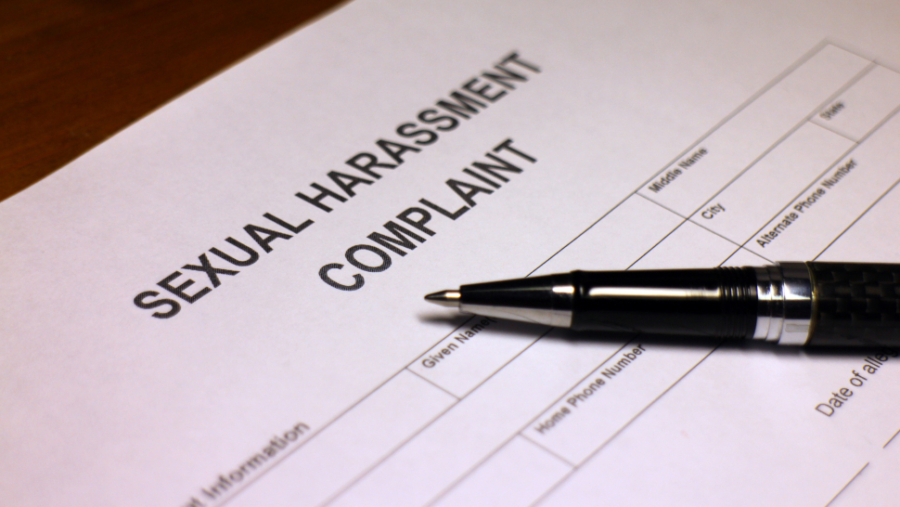

Across all organisations, protecting against and addressing workplace sexual harassment is a higher priority on the HR agenda. For care providers across all health and social care services, risks can be heightened by unsocial opening hours with reduced staffing and the nature of workplace interactions between staff and clients.
Research by the Trade Union Congress has shown that “sexual harassment appears to be more likely in situations where there is a substantial power difference between men and women. As is the case in other types of violence against women, sexual harassment is inextricably linked with power. The evidence shows sexual harassment is more likely to occur in workplaces where there are substantial power differences between women and men. Perpetrators may be abusing a position of power by harassing someone they see as less powerful or may feel powerless and use sexual harassment as a means to disempower the target of their harassment and thus increase their own power and status in the workplace.”
In March 2018 the Equality and Human Rights Commission (EHRC) recommended a mandatory duty and code of practice be introduced with the aim of eliminating sexual harassment in the workplace by transforming workplace culture, promoting transparency and strengthening legal protections.
In January 2020, the EHRC published additional technical guidance on sexual harassment at work, compelling employers to act to prevent sexual harassment: “all employers have a duty of care to protect their workers and will be legally liable for harassment in the workplace if they have not taken reasonable steps to prevent it.”
At present, proposed reforms to the workplace safeguards are making their way through Parliament, via a Private Members Bill.
Whilst at the time of writing, the introduction of new legislation has been delayed, the key considerations of protecting the workforce against sexual harassment remain central to creating a workplace with a zero-tolerance approach.
The current legal position
Currently addressed by the Equality Act 2010, for providers engaging not only employed staff but also locums and other self-employed workers, it is key to remember that Equality Act protection covers all those working for and providing services to your service provision. It also extends to your duties as a service provider to your clients, and compels employers to treat as seriously as complaints against co-workers.
What is the definition of sexual harassment?
Sexual harassment under the Equality Act 2010 occurs when an individual engages in unwanted behaviour of a sexual nature which has the purpose or effect of:
- Violating someone’s dignity
- Creating an intimidating, hostile, degrading, humiliating or offensive environment for the individual concerned.
In addition to unwanted physical contact, there are a number of behaviours that may also qualify as sexual harassment, including the non-exhaustive list below:
- Sexual “banter” or jokes about a colleague’s sex life
- Asking intrusive sexual questions
- Spreading sexual rumours
- Making sexually offensive or suggestive gestures or facial expressions
- Repeatedly asking a colleague out on a date or for sexual favours
- Sharing inappropriate stories about sexual experiences
- Following a colleague around or paying them excessive attention
- Staring or leering
- Sending emails of a sexual nature or sharing/displaying sexually explicit images
- Making insulting comments about someone’s gender identity or sexual orientation – or asking about someone’s sexual orientation.
What if I receive a complaint?
Where an employee raises a complaint or grievance concerning sexual harassment that has occurred at work, treat it seriously and carry out an investigation into the allegation. This may be under your grievance procedure, or a specific harassment policy.
Many complainants feel powerless to report incidents owing to their management hierarchy, “as nearly one in five women reported that their harasser was either a direct manager or someone else with direct authority over them. This creates significant barriers for women trying to report their harassment, as the starting point for many complaints procedures is an individuals’ manager. This should be an important consideration when designing safe reporting mechanisms.”
Providers may want to consider using more proactive and innovative reporting channels such as anonymous and/or confidential methods like telephone helplines run by third parties to provide support, and/or online reporting tools to report harassment, to enable a perceived safer environment to report allegations.
It’s also key to consider whether there is a parallel police investigation and how the two processes interlink. This article focusses solely on the employment practices. Advice should be sought on the handling of a complex issue which involves concurrent processes.
Dependent on the outcome, guidance, support and, potentially, counselling could be offered to those people who have been affected by the harassment, including managers appointed to deal with the matters and witnesses involved. If the allegation is one of sexual violence, the manager to whom the complainant made the original disclosure complaint will also need to be supported. Given they are unlikely to be experienced in dealing with sexual violence complaints, with consideration of the potential impact on them in dealing with such a sensitive and difficult subject is advisable.
A failure to carry out a reasonable investigation into the employee’s allegation may amount to a breach of the implied duty of trust and confidence that exists between the employer and employee, entitling the employee to resign and claim constructive dismissal.
Additionally or alternatively, the employer may be vicariously liable – under section 109 of the Equality Act – and consequently responsible in law for the harassing employee’s actions, unless it can show that it took all reasonable steps to prevent the sexual harassment from occurring. Training of staff assists in defending such complaints.
Does an employer have any obligation to report complaints of sexual harassment or assault to the police?
It is important to differentiate between sexual harassment that might be criminal, for example an alleged rape, or sexual harassment under the employment law (Equality Act 2010) definition, which is much broader. For example, sexist jokes may amount to sexual harassment for the purposes of employment legislation but will usually not be criminal.
If crime is suspected, the complainant should be offered the choice on whether or not they wish the incident to be reported to the police. Where the individual does not wish to report the matter to the police, the provider should consider how to address this decision as part of the internal process. Where the incident involves the safeguarding of children or vulnerable adults, the organisation is legally obliged to make such reports to the police and relevant authorities and/or regulators.
Moving forward
- Expect legal change – Once enacted, provisions will cover:
- A new duty for employers to take all reasonable steps to prevent sexual harassment
- Enable Employment Tribunals to uplift compensation by up to 25% where an employer is found to have breached the new duty
- Re-introduce the liability for third-party harassment (previously repealed from the Equality Act)
- Provide a protection against liability for employers for the expression of certain opinions by others in the workplace.
- Offer training – All levels of management should receive regular training on sexual harassment, both in terms of what constitutes sexual harassment, how to respond to complaints, how to support those affected and how allegations should be handled.
- Apply clear policies – Take a clear zero-tolerance approach to sexual harassment and implement suitably drafted policies which reflect this. This is a crucial cultural change for many organisations, by making all levels within the organisation accountable.
- Enforce policies effectively – Complaints should always be tackled in a neutral and sympathetic way and investigated in a timely manner with any appropriate action being taken against the perpetrators in accordance with any disciplinary policy.
The knowledge gap amongst managers is the first area to address for many employers. Kerrie Best, Head of Operations at Purple Leaf – a charity which works with organisations to review their policies and procedures, provides training and cultural change initiatives, and provides therapeutic and coaching support to those impacted by an allegation of sexual harassment, said ‘Managers need to be skilled to respond to allegations appropriately, ensuring that victims of sexual harassment feel believed, heard, and validated. Leaders can promote a zero-tolerance attitude to sexual harassment by training their staff to be active bystanders.”
Research tells us that when we witness inappropriate behaviours we may minimise them, collude with them or believe that someone else will act so we don’t have to, a so called ‘diffusion of responsibility’. Providing a framework that everyone in an organisation can follow ensures that behaviour that is sexually inappropriate is recognised as such and people know how to respond.’
With the changing landscape and legal protections in the workplace promoting cultural change in this highly sensitive area, health and social care management should ensure sexual harassment is adequately considered and addressed at all levels of their practice.










